Japanese Design Archive Survey
DESIGN ARCHIVE
Designers & Creators
Teruaki Ohashi
Product(furniture) designer
Interview Date: 19 November 2017 14:00 - 16:00
Location: TAIJI FUJIMORI ATELIER
Interviewees: Taiji Fujimori (TAIJI FUJIMORI ATELIER, Former staff of Teruaki Ohashi Atelier)
Interviewers: Yasuko Seki, Aia Urakawa
Author: Aia Urakawa
PROFILE
Profile
Teruaki Ohashi
Product(furniture) designer
1938 Born in Aichi.
1962 Graduated from Kuwasawa Design School.
1962-69 Tokyo Institute of Technology, School of Engineering, Shinohara Laboratory(Technical Officer).
Studied architecture under Kazuo Shinohara.
1965-69 Assistant at Tokyo Zokei University and full-time lecturer at the same university the following year.
1972 Founding of the studio.
1984 Professor at Tokyo Zokei University.
1992 He passed away.
Description
Description
Teruaki Ohashi started out as an architect in the 1960s, working on residential interiors and gradually becoming fascinated by furniture design. Some of the most famous pieces of furniture have been created in collaboration with architects such as Kazunari Sakamoto and Toyo Ito.
Ohashi turned his attention to the fundamentals of what a piece of furniture or a chair should be, and pursued them with sincerity, changing materials and design techniques again and again. His first furniture projects in the seventies were so-called "Boxes ", such as "Wooden boxes", "Car boxes" and "Long boxe". After that, he designed "Chair or a Stand-Like Chair / Chair Miri", thinking that a chair is like a stand in contrast to a boxes. From there, he started to work on furniture in earnest. Six different chairs made of steel pipes, board furniture made of cheap plywood. Up until then, his designs had been somewhat rational and stoic, but in the 1980s, as if suddenly freed from something, his world view expanded greatly and he began to produce creative works. The "Puck", a cabinet with long legs and strange proportions; the "Frog Chair", with its humorous form and bright colours; the "Hannan Chair", with its Asian batik, which looks as if it is about to move; and the "Tokyo Mickey Mouse" and "Donald Duck". His work in the 1980s, in particular his chairs, had a huge impact on the design world, and his sudden death comes at a time when many were wondering what would happen next.
Although there are few books and magazine articles written about Ohashi's furniture, his way of thinking and his research are valuable assets in the history of furniture design. It will be necessary to leave them as an archive for posterity and to use them as the basis for further research. We spoke to the furniture designer Taiji Fujimori, the last member of the group and heir to its DNA, about the Ohashi archive.
Masterpiece
Masterpiece
Architecture
"Housing in Ushigaya" (1969), "Omachi Apartment" (1971)
Furniture
"The Wooden Boxes" (1973); "Car Boxes" and "Long Boxes" (1974); "Chair or a Stand-Like Chair / Chair Miri" (1976) * This chair was designed for "Machiya in Shirota" (architecture: Kazunari Sakamoto); 6 types of steel pipe chairs ("Tum", "Hapi", "Tem", "Oma", "Pito", "Kukyu", all 1978); "Board Furniture" (1979 - 1984); Cabinets ("Trinculo", "Puck", "Feste", "Touchstone", all 1982); "The Frog Chair" (1985) and the "Hannan Chair" *This chair was designed for the "Silver Hut" (architecture: Toyo Ito) (1986); "Tokyo Mickey Mouse" (1988); "Donald Duck" (1989); "Café Chair" *This chair was designed for the "Yatsushiro City Museum" (architecture: Toyo Ito) (1990).
Books
"Trinculo – shikou toshiteno kagu", SUMAI Library Publishing Company (1993)
Exhibition Catalogue
"Touchstone Ohashi Teruaki no kagu", TOTO Publishing (2006)
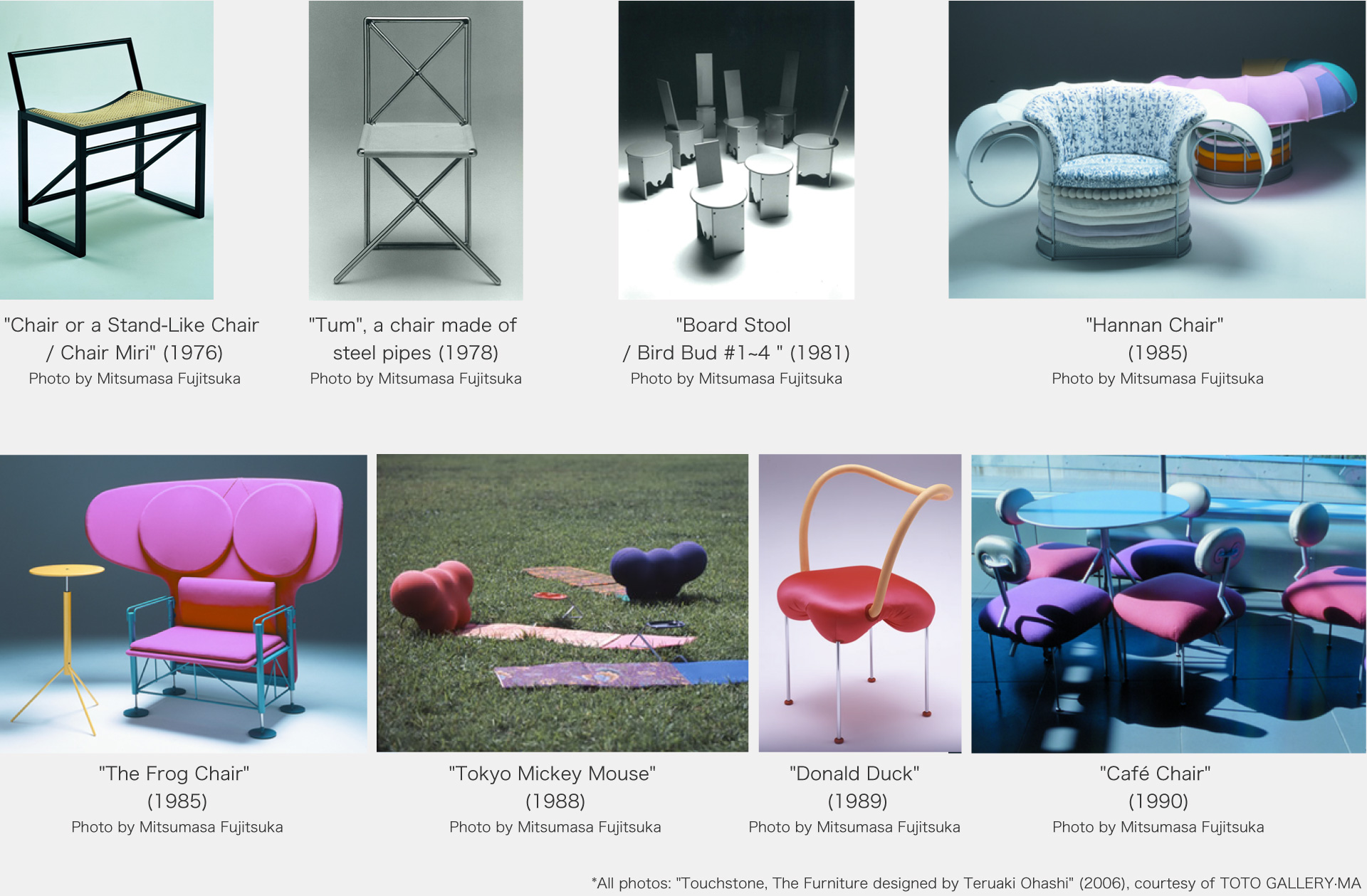
Interview
Interview
I think there is a need for more archiving in the field of interior design in Japan.
Digging deep and thinking about furniture.
ー As a furniture designer, Mr. Ohashi worked with architects such as Mr. Toyo Ito, Mr. Kazunari Sakamoto and Ms. Itsuko Hasegawa in the 60s and 80s to create an era. Unfortunately, he died suddenly in 1992, just as his career was beginning to take off. When did you start working for Mr. Ohashi's studio and for how long?
Fujimori I was in his office for about the last year of his life before he passed away. There was another senior member of staff when I joined, but he left soon afterwards, so I was the only staff member at the end.
ー How did you come to join Mr. Ohashi's studio?
Fujimori I was a pupil at Tokyo Zokei University. I was surprised and shocked to find out that there are people who think so deeply about furniture. I also learned that furniture can be used to express many different things, which made me even more interested. During my studies I was allowed to visit the studio from time to time, and after graduating I started to work as an apprentice.
ー Mr. Ohashi passed away suddenly in 1992, at the age of 52, and I think his office was suddenly cut off from the rest of the world. At that time, did you take the lead in taking over the project and organising the materials?
Fujimori I was the only member of staff and naturally I thought I should be the one to do it. At that time, there happened to be no projects working with architects, so we didn't have to deal with that. The first thing I did was to organise the drawings and documents in my office. "SD (Space Design)" (Kajima Institute Publishing) is going to publish a feature article in memory of Mr. Ohashi, so I also put together materials to be published there. I gave all these drawings and documents to the architect Mr. Hironori Shirasawa, who works in the same laboratory as Mr. Ohashi at Tokyo Zokei University. Mr. Shirasawa later became President of the University, but he is now retired and no longer with the University.
ー By drawings, do you mean full size drawings?
Fujimori There were full-size drawings of A0 and larger, A1 and A2 sizes, as well as hand-drawn sketches.
ー Mr. Ohashi started out as an architect and designed two houses. Do you also have those drawings?
Fujimori There probably is, but unfortunately we don't know the details. Even when I was at the studio, I didn't feel like I could easily ask Mr. Ohashi about such things, so there are many things I don't know now.
ー Was he strict?
Fujimori I was never overtly angry or shouted at, but I had a lot of respect and I was always nervous. Nowadays it's not so easy to find such relationships.
ー Who manages the rights to Mr. Ohashi’s works and materials?
Fujimori It is managed by his daughter. In fact, the drawings have been pulled up from the university and are now in this studio. It will be donated to M+, a museum in Hong Kong which is due to open next year. This has been discussed and agreed between the university and the family. I am currently in the process of preparing for this.
ー What else will you be donating to M+ besides drawings?
Fujimori It is likely that some of the works will be donated, but I am not aware of the details. Many of the works are in private collections, in addition to those at the University. I also have two chairs from the steel pipe series and two "board furniture" that I got from Ms. Itsuko Hasegawa. The architects we collaborated with and Mr. Koji Taki also had some of Mr. Ohashi's furniture in their homes. I think there was a "board furniture" in the lobby of Tokyo Zokei University. Then there is the textile designer, Ms. Michiko Ojima, who has a dyeing and weaving studio in Kagurazaka and who was responsible for the fabrics for Mr. Ohashi's furniture, and I think there are a few things from her early days. It was probably bought by you at the time.
ー Does anyone have a batch of 20 or 30 legs?
Fujimori I don't think there is anyone like that.
ー Do you have a photo of him?
Fujimori It was probably included in the material I compiled. I believe that what has been taken by the photographer is at the photographer's place. Amongst other things, Mr. Mitsumasa Fujitsuka has taken and stored many photographs of furniture.
ー Mr. Ohashi traced furniture by Danish designers such as Wegner, Mogensen and Kjærholm, and also reproduced Shaker furniture. Do you have the research paper or drawings to reproduce it?
Fujimori I don't know where the material is, because Mr. Ohashi's research on shakers was long before I joined the studio, so I don't know where the material is. I think I saw a Shaker stool in his studio. I think there was also something like his dissertation on the study of chairs. At the moment, we are taking the drawings and other materials that were stored at Tokyo Zokei University back to my studio and re-organising them. When it comes to the study of masterpieces, we usually refer to literature and drawings, but Mr. Ohashi's research was based on actual measurements and the actual construction of a chair at a scale of 1:1.
ー You were taught his unique method of measurement in a class at Tokyo Zokei University.
Fujimori In groups of three, the students spread out a piece of paper on a desk, placed the masterpiece chair on it and took measurements. For the curves of the seat and arms, we used a "lowering swing" with weights used in surveying to bring out the curves point by point. He referred to the expression of the shape of an object as "gesture". He believes that a chair contains a kind of sensitivity of its time, and by measuring it, we can understand the thoughts of the person who designed it. For example, what was the idea behind it, why did they make it that way, why do you think it's good? I can't really explain it in words, but it's something that I've come to understand physically and sensitively as I've measured it.
ー The purpose of his research was not only to document the history and technicalities of the furniture, but also to find inspiration for his own designs. He was also interested in the chair itself, calling it "like a stand". Did he continue this kind of research in his later years?
Fujimori It's not my place to say this, but I think that in the 1990s, after the festive bubble period, the world had calmed down a bit, and his designs became more "normal" in a good sense, and he was trying to move into new territory. From the "Hannan Chair" onwards, he confronted the fictional nature of design, seeing furniture as a "cultural game" and letting his imagination run wild. In a way, it was going beyond the realm of furniture design. In his later years, I think he was a little more conscious of how to superimpose his thoughts, which had gone through the method of the game, onto the real space. Like reopening and looking forward again.
The things we tend to overlook are actually the basis of life.
ー In the world of architecture, there is a term "professor-architect", which means a person who teaches at a university and creates works at the same time. Was he also a professor interior designer?
Fujimori Yes, he did. Perhaps it would be better to say that he was designing from a research standpoint. When I joined he told me not to work on designs and drawings out of the blue, but to pick up anything that interested me in my daily life and write a report on it. I wrote about things that affect me in some way in my daily life, such as TV, air conditioning and toilets. In hindsight, it was poorly done, but he said it was "very simple, but good". I remember it well. We discussed the report and thought about what tools we have to live with. He taught me not only about the colours, shapes and functions of things, but also about how the things we take for granted in our daily lives are actually the basis of life, and how to look with suspicion at the things we overlook.
ー You were trained to explore the roots of things. Was he always taught to do that by his disciples?
Fujimori I don't know what he was doing before that, but I think there was a kind of trend in his thinking at that time. For example, in the seventies he was influenced by the ideas of "Yasei no Shikou" (Misuzu Shobo). When he designed the "Hannan Chair" in the 1980s, he was very much into Asian culture and used to play gamelan music in his office all day long. When I was working in his studio, he was working when he was commissioned, and his time was mainly spent researching, so he was probably thinking about trying something new again.
ー By the way, it's a bit surprising that he came from Mr. Shinohara's lab at Tokyo Institute of Technology. Have you asked him anything like the reason, background or purpose of it?
Fujimori Perhaps Mr. Shinohara came to teach at Kuwasawa, and that is where he was influenced. Mr. Ohashi was a very precise draughtsman. In the classroom of Shinohara School, there was a drawing of the "White House" drawn by Mr. Ohashi. I have heard that Mr. Shinohara told his students to draw that as a model.
ー At the Shinohara School, he must have had some kind of training in thinking, where he would debate to find out the essence of things. Did you have any contact with Mr. Ito and Mr. Sakamoto, who are closely related to the Shinohara School, outside of your work?
Fujimori Of course there was an exchange. I only know what I've been told about that period, so I think it's better to ask those who shared it with him.
Teruaki Ohashi and Shiro Kuramata, the twin peers of the 1980s.
ー Shiro Kuramata was also present at the Shinohara School. He was working at the same time as Mr. Ohashi in the 80's, and I think they were two of the most creative furniture designers. Their styles and ideas were different, and I think there was a historical background, but the flow of their work seems to be similar. In the 60's he made boxes, in the 70's he developed a rational design using materials such as steel, and in the 80's he suddenly created works that surprised everyone. Mr. Kuramata presented "Miss Blanche", an artificial rose enclosed in acrylic, and Mr. Ohashi presented "Hannan Chair". The spirit of their critique of society and the fact that they remained committed to things like their own position as artists. The fact that they died so young, in the middle of their search for more design, seems to have a lot of overlap. He was also a graduate of the Kuwasawa Design School, so did he and Kuramata have a lot of contact?
Fujimori This is also what I heard from the senior members of the studio, they were aware of each other, even if they never met face to face. In the design world, Mr. Kuramata was often referred to as the sun and Mr. Ohashi as the moon. Perhaps this is because Mr. Ohashi did not design glamorous commercial facilities and restaurants like Mr. Kuramata. He didn't drink, and he always gave the impression of being introspective, always thinking about something. I think he was good friends with Mr. Koji Taki. In the catalogue of the exhibition ("Touchstone, The Furniture designed by Teruaki Ohashi"), there is a wonderful article by Mr. Taki entitled "Thoughts on Mr. Ohashi". I was surprised that it was possible to analyse and dismantle a single artist to this extent. Moreover, his strong feelings for Mr. Ohashi are overflowing.
ー I have heard from many people that architects and designers at that time were very conscious of how they would be seen by Mr. Taki. It seems that Mr. Kuramata suffered for a long time under the spell of what Mr. Taki wrote about him. However, he was later liberated when he met Mr. Ettore Sottsass, which led him to create a new style.
Fujimori Nowadays, there is no one who can criticise properly like that, especially in the design world.
ー There are fewer interior and design magazines where people can publish their work and criticism. Mr. Kuramata has successive generations of apprentices since his early days, known as the "Kuramata School", and all of them have been active ever since. Do any of Mr. Ohashi's apprentices still work as designers?
Fujimori As far as I know, there are very few people who continue to design furniture. Many of them have gone into other fields of design, or have gone on to become dancers or something else entirely.
ー I wonder why?
Fujimori I don't know. Perhaps it's because Mr. Ohashi is so overpowering in the field of "furniture". I was only in his studio for a short time, so I had to figure it out one by one on my own, without knowing anything. Maybe that's what keeps me going now.
ー Why did Mr. Fujimori go to Ms. Hasegawa's office after Mr. Ohashi's death?
Fujimori When I was feeling depressed, Mr. Shirasawa and other members of the Shinohara School, including Mr. Ito, Mr. Sakamoto and Ms. Hasegawa, came together to discuss my future. Ms. Hasegawa invited me to join her as she was thinking of hiring someone in the interior design department of her office. I am still very grateful to Ms. Hasegawa. I learned a lot from Mr. Ohashi, like his way of thinking and attitude towards design, and from Ms. Hasegawa, how furniture should be in architecture, as well as her practical experience in public facilities. I was there for about seven years, from 1992 to 1999, just when she was working on a lot of large public buildings. I started my own business in 1999, when I finished my work at the Niigata City Performing Arts Center.
The exhibition was an opportunity to organise the archive.
ー Going back to the archive, are there only two books published by Mr. Ohashi? It would be nice to have a little more in the way of documentation, such as a summary of the evolution of his furniture and his research, or of his work with architects.
Fujimori Only the book "Trinculo – shikou toshiteno kagu " and the catalogue of the exhibition "Touchstone Ohashi Teruaki no kagu ". I have a number of magazines that feature it. Two issues of 'SD' and 'JAPAN INTERIOR DESIGN'. I'm sure there are many more articles that have appeared in the magazine.
ー The memorial exhibition "Touchstone, The Furniture designed by Teruaki Ohashi" at TOTO GALLERY·MA in Nogizaka, Tokyo, was perhaps one of the first opportunities to sort out the archives. You were also members of the committee, Mr. Ito and Mr. Sakamoto, how did you come up with the idea of organising the exhibition?
Fujimori Mr. Taki said that we had to tell the world that there were designers like this, so he organized the exhibition, and Mr. Ito and Mr. Sakamoto formed a committee and started to work.
ー How did you collect his work for the exhibition?
Fujimori We have identified what we have and what we don't have, we have reproduced it. The "Hannan Chair" was reupholstered by Ms. Ojima, who had worked with him on textiles. Most of the other items were borrowed from private individuals, and we returned them after the exhibition, and I think we donated some of them to Tokyo Zokei University.
ー Who were the other members of the committee?
Fujimori They are Mr. Shirasawa, Mr. Kenji Oki and Mr. Fumio Enomoto who taught at Zokei University after Mr. Ohashi passed away, his student and architect Mr. Tetsuki Isaji, the aforementioned Ms. Ojima and Mr. Takafumi Inoue. Mr. Inoue is the head of inoueindustries inc., the company that produced the frames for Mr. Ohashi's "Board Furniture" and "Hannan Chair". Aoshima Shoten, the same company that made the furniture for Mr. Kuramata's drawers, made the wooden boxes and car boxes.
ー Does the Tokyo Zokei University have a collection activity like Musashino Art University?
Fujimori Tokyo Zokei University has a museum, but I don't think it has a collection. In the field of architecture, there is a movement to preserve archives, but in the field of interior design, this idea is rare and I wonder if something can be done about it. I think it's good that designers are donating their works and materials to M+, because M+ will also conduct research. However, it is a little disappointing that we will not be able to see Mr. Ohashi's works and materials in Japan.
In addition to the blueprints, he also left isometric drawings.
ー May I see your drawings?
Fujimori These three large tubes contain the full-size drawings, together with drawings and sketches.
ー It's a very detailed drawing. Of course, in those days, everything was drawn by hand.
Fujimori Mr. Ohashi even specified a small screw. The figures for dimensions such as R and depth are individually stamped with a rubber stamp rather than drawn by hand.
ー Mr. Fujimori, nowadays you use a computer for your drawings, don't you?
Fujimori Yes, I do. When I was in Ms. Hasegawa's office, I drew mostly by hand, using a parallel ruler. I often drew sketch diagrams. I started using CAD when I started my own business, and I think my generation is the last to have experienced both hand-drawing and computers in practice.
ー Is there a difference between drawing on a computer and doing a one-minute drawing like this by hand?
Fujimori Nowadays I can start drawing immediately with a computer, but with hand-drawn drawings I had to wash my hands first because I didn't want to get the paper dirty, and if I made a mistake I had to redraw it, so I had to concentrate all my attention. Even now, even if I draw it on the computer, I always do a check to see the actual size by typing it out at a fraction of its original size, and then I adjust the details based on that. I also make and study one-by-one models.
ー What is this dotted sketch?
Fujimori Apart from the drawings, Mr. Ohashi left behind these axonometric drawings. When I joined the studio, other staff had already drawn the recent ones, but there were no old boxes and steel pipe furniture, so I had to draw them. I drew this using a Rotring.
ー It looks like it was drawn on a computer, but it was drawn by hand. It takes a lot of time to finish a single piece. What was the reason for making this?
Fujimori I did not ask Mr. Ohashi about that. I will try to make copies of these drawings before donating them. However, I am trying to work out how I can afford the considerable costs involved, and I am also trying to find out where I can get a copy of such a large format.
ー I see. That's a lot of work.
Fujimori I think it's my mission.
ー You were also destined to be the last member of the studio. Last question, what do you think you have learned from Mr. Ohashi?
Fujimori The biggest thing is the way I approach design. I am now passing on Mr. Ohashi's teachings to my students in my own way. When we design a chair, we often just draw a shape. However, I think there is no point in designing a chair if you don't know who it will be used for, what kind of space it will be used in, what it will change and what you want to say through it.
ー Thank you very much for your valuable talk. We would love to talk to Mr. Shirasawa and Ms. Ojima in the future.
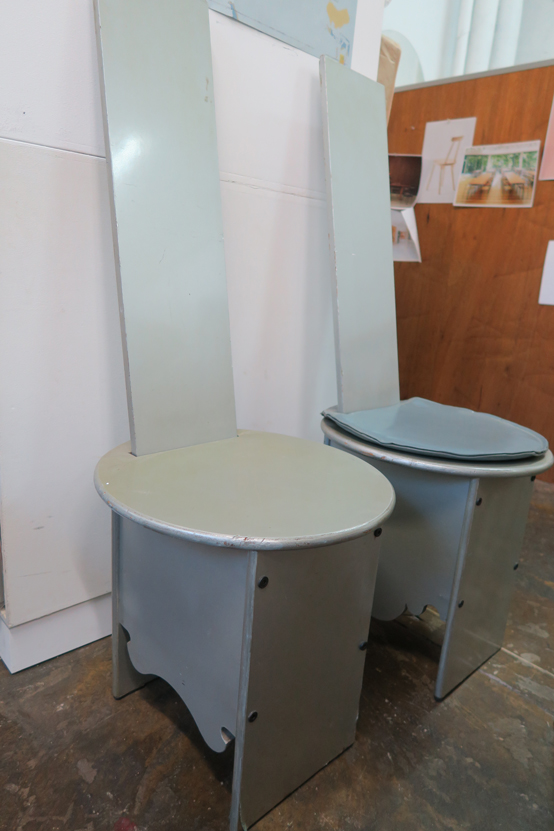
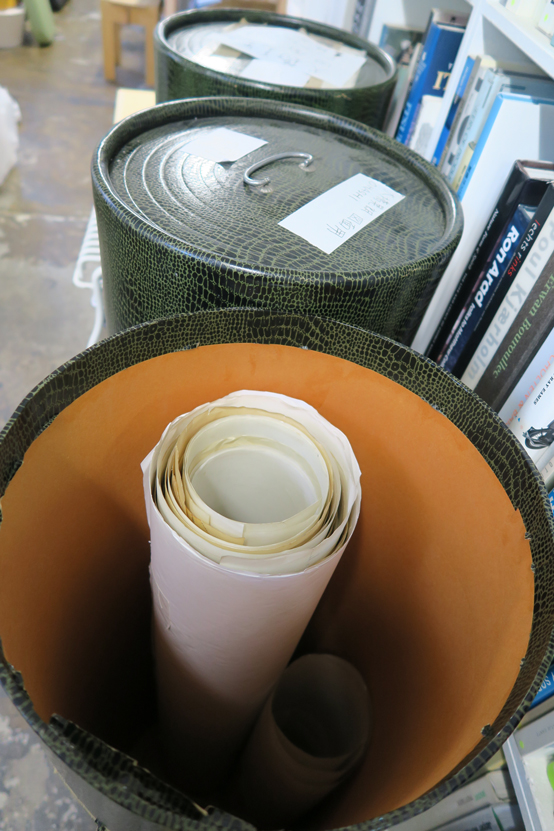
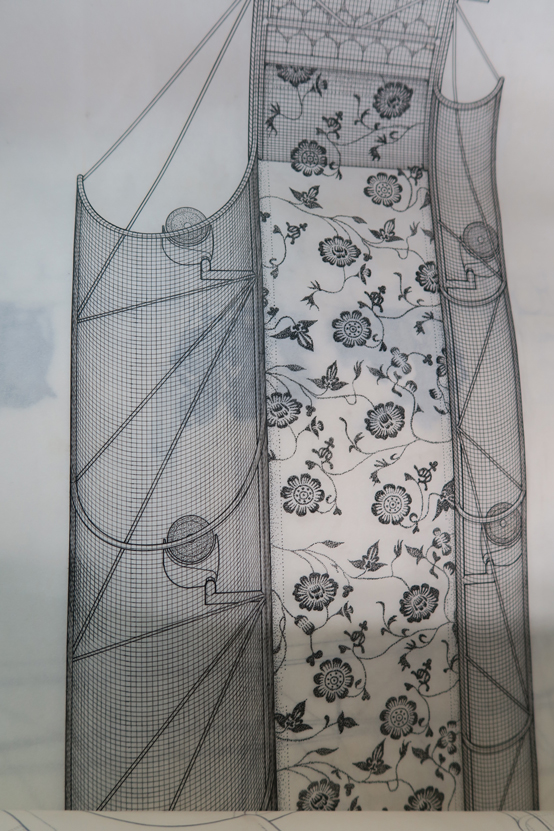
Mr. Fujimori's board furniture. / Axonometric drawings / Drawings
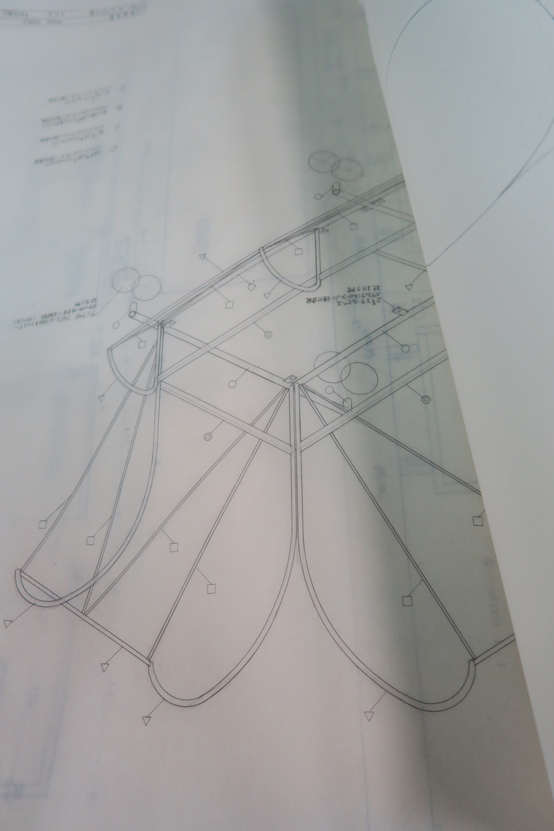
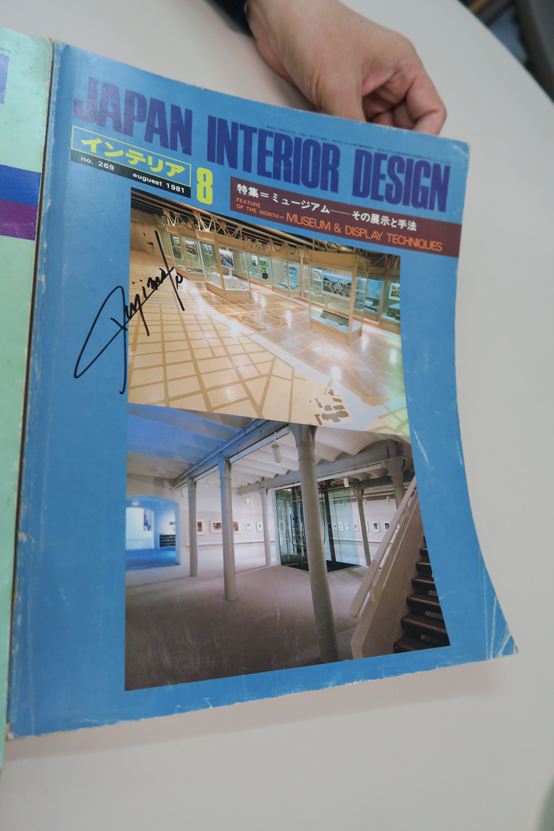
Tube with drawings / Publications
Enquiry:
TAIJI FUJIMORI ATELIER http://www.taiji-fujimori.com/

